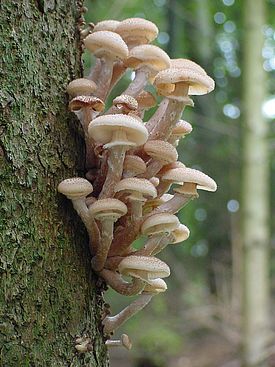30.10.2017 | News
Armillaria are amongst the largest living organisms: below ground they form large root-like networks that can cover several square kilometers. They are major wood decomposers and thus play important roles in the nutrient cycling. They are also, however, feared fungal pathogens known to attack hundreds of plant species in forests and parks worldwide.
An international consortium with the participation of WSL researchers now sequenced the genomes of four Armillaria species, including Armillaria ostoyae, one of the most devastating forest pathogens. Their study provides insight into the genetic basis of how these fungi spread and infect plants, and helps in developing strategies to control the damage they cause on woody plants. The scientific paper was published online in Nature Evolution & Ecology on October 30.
Read the scientific paper on Nature.com
Contact ¶
Copyright ¶
WSL and SLF provide image and sound material free of charge for use in the context of press contributions in connection with this media release. The transfer of this material to image, sound and/or video databases and the sale of the material by third parties are not permitted.
Links and documents ¶
Original article:
Gyorgy Sipos et. al. Genome expansion and lineage-specific genetic innovations in the forest pathogenic fungi Armillaria. Nature Ecology & Evolution, published online 30 October 2017, doi: 10.1038/s41559-017-0347-8

